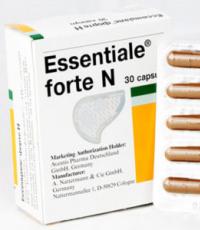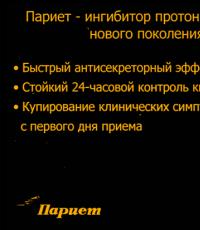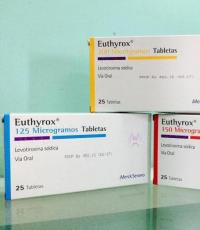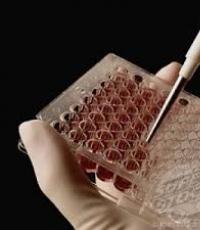What is insulin made from? What is insulin for diabetics made of What is insulin for diabetics made of
A vital hormone in the human body responsible for regulating the level of glucose in the bloodstream, which is produced by the pancreas. If for some reason the hormone is produced in insufficient quantities and its deficiency occurs, then the metabolism is disturbed, against which a serious endocrine disease called diabetes develops.
After scientists mastered the method of obtaining insulin artificially using transgenic bacteria, insulin-dependent diabetics got the opportunity for a long and fulfilling life, subject to a number of requirements:
- daily monitoring of blood sugar levels;
- diet and exercise;
- injections of a hormone prescribed by a doctor;
If the patient neglects these recommendations, the disease can lead to serious crippling complications and death. Many people who first discover high blood sugar are concerned about the question: “How do you get insulin?” The scheme for obtaining insulin is quite simple. But before talking about it in more detail, I would like to draw attention to the fact that the use of a hormone without a prescription and prescription from an endocrinologist can lead to dangerous, irreversible consequences, causing coma, sudden death or insulin-dependent diabetes in a previously healthy person.
How is insulin obtained?
The scheme for obtaining the drug considers two options for its acquisition:
- Buy at a pharmacy without a prescription (this is provided so that sick people can buy medicine even if they did not have time to fill out a prescription form for free insulin while away from home, on vacation or on a business trip);
- Get the drug for free by writing an insulin prescription from an endocrinologist.
Answering the numerous questions of diabetics: "Who is entitled to free insulin and how to get it?" Doctors explain: Citizens of the Russian Federation and foreigners with a residence permit who have been diagnosed with insulin-dependent diabetes are entitled to receive preferential insulin. Benefits for medicines granted to citizens of Russia are regulated by the federal law "On State Social Assistance" of July 17, 1999, 178-FZ and Government Decree of July 30, 1999 No. 890 (as amended on February 14, 2002).
The right to provide a prescription for receiving a hormonal drug free of charge has an endocrinologist or paramedic included in the register of persons entitled to issue prescription forms on preferential terms. The formation and maintenance of this register is carried out by the territorial health authorities.
Free insulin prescriptions can never be provided over the Internet. Following the scheme for obtaining a hormonal drug, a document giving the right to receive it on a preferential basis must be issued by a doctor or paramedic at a personal appointment of the patient after his individual examination if there are medical indications. And also when providing patients with the following documents:
- Passport. A prescription form for a prescribed reduced-price drug for a diabetic will be issued at the place of his registration, and not at the place of actual residence, if the patient has not written an application in advance and has not attached himself to the medical organization of his choice, located near the place of residence. But he has the right to use the right to choose a medical institution no more than once a year;
- Medical insurance policy;
- Individual insurance policy (SNILS);
- Certificate of disability or otherwise confirming the right to preferential treatment;
- Certificate from the pension fund that you have not refused to provide social services;
New forms of registration of preferential prescriptions, laid down by the Program and meeting the requirements of the Ministry of Health, provide for filling in the columns with the numbers of the above documents.
Where can I get a prescription drug?
A hormonal drug will be given to you at a pharmacy with which the medical institution has entered into an agreement. The addresses of those pharmacies that serve preferential insulin prescriptions must be indicated to you by your doctor.
The period of validity of the document for receiving free medicine varies from 2 weeks to 1 month (this is indicated in the prescription). Both the patient and his relatives can get medicine at the pharmacy by providing the pharmacist with a prescription form.
If the free medicine provided to the diabetic by the Program is temporarily not available in the pharmacy, then you should resort to the following scheme of action: contact the pharmacist-administrator with a request to register your document giving the right to receive a preferential drug in a special journal. After that, in accordance with the order of the Ministry of Health and Social Development of Russia, the medicine must be provided within 10 working days. If for some reason this cannot be done, the pharmacy is obliged to provide you with information on further actions.
If the pharmacy refuses to provide you with prescription drugs prescribed by the Program, then you should notify your attending physician and contact the TFOMS or CMO - organizations whose duties include monitoring the observance of citizens' rights in the general health insurance system.
How to get free insulin if you lose your prescription? If this unfortunate misunderstanding happened to you, then be sure to contact your doctor. He will help you get a new prescription by making a note on the outpatient card and forward the missing information to the pharmaceutical company. This scheme of action will help prevent the pharmacy from issuing a preferential medicine to an unidentified person.
Reviews and comments
I have type 2 diabetes, non-insulin dependent. A friend advised me to lower my blood sugar with DiabeNot. I ordered via the Internet. Started taking. I follow a non-strict diet, I started to walk 2-3 kilometers every morning. Over the past two weeks, I have noticed a gradual decrease in sugar on a glucometer in the morning before breakfast from 9.3 to 7.1, and yesterday even to 6.1! I continue my preventive course. I will write about success.
Margarita Pavlovna, I am also now sitting on Diabenot. DM 2. I really don’t have time for a diet and walks, but I don’t abuse sweets and carbohydrates, I think XE, but due to age, sugar is still elevated. The results are not as good as yours, but for 7.0 sugar does not come out for a week. What glucometer do you measure sugar with? Does it show on plasma or whole blood? I would like to compare the results of taking the drug.
.jpg) The question of what insulin is made of is of interest not only to doctors and pharmacists, but also to patients with diabetes, as well as their relatives and friends. Today, this hormone, unique and so important for human health, can be obtained from various raw materials using specially developed and carefully tested technologies. Depending on the method of preparation, the following types of insulin are distinguished:
The question of what insulin is made of is of interest not only to doctors and pharmacists, but also to patients with diabetes, as well as their relatives and friends. Today, this hormone, unique and so important for human health, can be obtained from various raw materials using specially developed and carefully tested technologies. Depending on the method of preparation, the following types of insulin are distinguished:
- Pork or bovine, also called an animal preparation
- Biosynthetic aka modified pork
- Genetically engineered or recombinant
- genetically modified
- Synthetic
Pork insulin has been used for the longest time to treat diabetes. Its use was started in the 20s of the last century. It should be noted that pig or animal was the only drug until the 80s of the last century. For its production, pancreatic tissue of animals is used. However, this method can hardly be called optimal or simple: working with biological raw materials is not always convenient, and the raw materials themselves are not enough.
In addition, the composition of porcine insulin does not quite coincide with the composition of the hormone produced by the body of a healthy person: their structure contains various amino acid residues. It should be noted that the hormones produced by the pancreas of cattle have an even greater number of differences, which cannot be called a positive phenomenon.
In addition to a pure multicomponent substance, such a preparation invariably contains the so-called proinsulin, a substance that is practically impossible to separate using modern purification methods. It is he who often becomes a source of allergic reactions, which is especially dangerous for children and the elderly.
For this reason, scientists around the world have long been interested in the question of bringing the composition of the hormone produced by animals into full compliance with the hormones of the pancreas of a healthy person. A real breakthrough in the pharmacology and treatment of diabetes mellitus was the production of a semi-synthetic drug obtained by replacing the amino acid alanine in an animal preparation with threonine.
In this case, the semi-synthetic method for obtaining the hormone is based on the use of animal products. In other words, they simply undergo modification and become identical to the hormones produced by humans. Among their advantages is compatibility with the human body and the absence of allergic reactions.
The disadvantages of this method include the lack of raw materials and the complexity of working with biological materials, as well as the high cost of both the technology itself and the resulting drug.
In this regard, the best drug for the treatment of diabetes is recombinant insulin obtained through genetic engineering. By the way, it is often called genetically engineered insulin, thus indicating the method of its production, and the resulting product is called human insulin, thereby emphasizing its absolute identity to the hormones produced by the pancreas of a healthy person.
Among the advantages of genetically engineered insulin, one should also note its high degree of purity and the absence of proinsulin, as well as the fact that it does not cause any allergic reactions and has no contraindications.
.jpg) The frequently asked question is quite understandable: what exactly is recombinant insulin made of? It turns out that this hormone is produced by yeast strains, as well as E. coli, placed in a special nutrient medium. At the same time, the amount of the substance obtained is so large that it is possible to completely abandon the use of drugs obtained from animal organs.
The frequently asked question is quite understandable: what exactly is recombinant insulin made of? It turns out that this hormone is produced by yeast strains, as well as E. coli, placed in a special nutrient medium. At the same time, the amount of the substance obtained is so large that it is possible to completely abandon the use of drugs obtained from animal organs.
Of course, we are not talking about a simple Escherichia coli, but about genetically modified and capable of producing soluble human genetically engineered insulin, the composition and properties of which are exactly the same as those of the hormone produced by the cells of the pancreas of a healthy person.
The advantages of genetically engineered insulin are not only its absolute similarity with the human hormone, but also the ease of production, a sufficient amount of raw materials and affordable cost.
Scientists around the world call the production of recombinant insulin a real breakthrough in the treatment of diabetes. The significance of this discovery is so great and important that it is difficult to overestimate it. It is enough to simply note that today almost 95% of the need for this hormone is met with the help of genetically engineered insulin. At the same time, thousands of people who had previously been allergic to drugs got a chance for a normal life.
Reviews and comments
I have type 2 diabetes, non-insulin dependent. A friend advised me to lower my blood sugar with
Insulin is a pancreatic hormone that plays a vital role in the body. It is this substance that contributes to the adequate absorption of glucose, which in turn is the main source of energy, and also nourishes the brain tissue.
Diabetics who are forced to take the hormone as an injection sooner or later think about what insulin is made of, how one drug differs from another, and how artificial analogues of the hormone affect a person’s well-being and the functional potential of organs and systems.
Differences between different types of insulin
Insulin is a vital drug. People with diabetes cannot do without this remedy. The pharmacological range of medicines for diabetics is relatively wide.
Preparations differ from each other in many aspects:

Every year in the world, leading pharmaceutical companies produce a huge amount of "artificial" hormone. Insulin manufacturers in Russia have also contributed to the development of this industry.
Every year, diabetics around the world consume over 6 billion units of insulin. Given the negative trends and the rapid increase in the number of patients with diabetes, the need for insulin will only increase.
Sources for the hormone
Not every person knows what insulin is made of for diabetics, but the origin of this most valuable drug is really interesting.
Modern insulin production technology uses two sources:
- Animals. The drug is obtained by treating the pancreas of cattle (less often), as well as pigs. Bovine insulin contains as many as three "extra" amino acids, which are alien in their biological structure and origin to humans. This can lead to the development of persistent allergic reactions. Pork insulin differs from the human hormone by only one amino acid, which makes it much safer. Depending on how insulin is produced, how thoroughly the biological product is purified, the degree of perception of the drug by the human body will depend;
- human counterparts. Products in this category are produced using the most sophisticated technologies. Leading pharmaceutical companies have developed bacteria to produce human insulin for medicinal purposes. Enzymatic transformation techniques are widely used to obtain semi-synthetic hormonal products. Another technology involves the use of innovative techniques in the field of genetic engineering to obtain unique DNA recombinant formulations with insulin.
How insulin was obtained: the first attempts of pharmacists
Medicines derived from animal sources are considered to be old technology medicines. Medicines are considered to be of relatively low quality due to the insufficient degree of purification of the final product. In the early 20s of the last century, insulin, even causing severe allergies, became a real "pharmacological miracle" that saved the lives of insulin-dependent people.
The drugs of the first releases were also difficult to tolerate due to the presence of proinsulin in the composition. Hormonal injections were especially poorly tolerated by children and the elderly. Over time, it was possible to get rid of this impurity (proinsulin) by a more thorough cleaning of the composition. Bovine insulin was abandoned altogether, as it almost always caused side effects.
What insulin is made of: important nuances
In modern schemes of therapeutic action on patients, both types of insulin are used: both animal and human origin. Recent developments allow the production of products of the highest degree of purification.
Previously, insulin could contain a number of undesirable impurities:

Previously, such “additives” could cause serious complications, especially in patients who are forced to take large doses of the drug.
Improved drugs are devoid of unwanted impurities. If we consider insulin of animal origin, the best is a monopeak product, which is produced with the production of a “peak” of a hormonal substance.
The duration of the pharmacological effect
The production of hormonal preparations has been established in several directions at once. Depending on how insulin is made, the duration of its action will depend.
There are the following types of drugs:

Ultrashort-acting preparations
Insulins with an ultra-short effect act literally in the first seconds after the administration of the drug. The peak of action occurs in 30-45 minutes. The total time of exposure to the patient's body does not exceed 3 hours.
Typical representatives of the group: Lizpro and Aspart. Insulin in the first version is produced by rearranging the amino acid residues in the hormone (we are talking about lysine and proline). In this way, during production, the risk of hexamers is minimized. Due to the fact that such insulin quickly breaks down into monomers, the process of assimilation of the drug is not accompanied by complications and side effects. 
Aspart is produced in a similar way. The only difference is that the amino acid proline is replaced with aspartic acid. The drug quickly breaks down in the human body into a number of simple molecules, instantly absorbed into the blood.
Short acting drugs
Short-acting insulins are buffer solutions. They are intended specifically for subcutaneous injections. In some cases, a different administration format is allowed, but only a doctor can make such decisions.
The drug begins to "work" after 15 - 25 minutes. The maximum concentration of the substance in the body is observed after 2 - 2.5 hours after the injection.
In general, the drug affects the patient's body for about 6 hours. Insulins of this category are created for the treatment of diabetics in a hospital setting. They allow you to quickly bring a person out of a state of acute hyperglycemia, diabetic precoma or coma. 
Intermediate insulin
Drugs slowly enter the bloodstream. Insulin is obtained according to the standard scheme, but the composition is improved at the final stages of production. To increase their hypoglycemic effect, special prolonging substances - zinc or protamine - are mixed into the composition. Most often, insulin is presented in the form of suspensions.
Long acting insulin
Long-acting insulins are the most modern pharmacological products to date. The most popular drug is Glargine. The manufacturer has never hidden what human insulin for diabetics is made of. With the help of DNA recombinant technology, it is possible to create an exact analogue of the hormone that is synthesized by the pancreas of a healthy person.
To obtain the final product, an extremely complex modification of the hormone molecule is carried out. Replace asparagine with glycine, adding arginine residues. The drug is not used to treat comatose or precomatous conditions. It is prescribed only subcutaneously. 
The role of excipients
It is impossible to imagine the production of any pharmacological product, in particular insulin, without the use of special additives.
Auxiliary components help to improve the chemical quality of the drug, as well as to achieve the maximum degree of purity of the composition.
According to their classes, all additives for insulin-containing drugs can be divided into the following categories:
- Substances that predetermine the prolongation of drugs;
- Disinfectants;
- acidity stabilizers.
Prolongators
In order to extend the time of exposure to the patient, prolongation drugs are mixed with the insulin solution.
Most often used:

Antimicrobial Ingredients
Antimicrobial ingredients prolong the shelf life of medicines. The presence of disinfectant components prevents the growth of microbes. These substances, by their biochemical nature, are preservatives that do not affect the activity of the drug itself.
The most popular antimicrobial additives used in insulin production are:

For each specific drug use their own special additives. Their interaction with each other without fail is studied in detail at the preclinical stage. The main requirement is that the preservative should not interfere with the biological activity of the drug.
A high-quality and skillfully selected disinfectant allows not only to maintain the sterility of the composition for a long period, but even to make intradermal or subcutaneous injections without first disinfecting the dermal tissue. This is extremely important in the event of extreme situations when there is no time to treat the injection site.
Insulin is essential for people with diabetes. The main action of insulin is to lower the concentration of glucose in the blood. Insulin is produced by the human pancreas. In this article, we will look at what insulin is made of now and what it was made of before.
Depending on the method of preparation, the following types of insulin are distinguished:
- Pork or bovine, also called an animal preparation
- Biosynthetic aka modified pork
- Genetically engineered or recombinant
- genetically modified
- Synthetic
Pork insulin was the first to be used, its use was started back in the 20s of the last century. It should be noted that porcine or animal insulin was the only drug until the 80s of the last century. For its production, pancreatic tissue of animals is used. However, this method can hardly be called optimal or simple: working with biological raw materials is not always convenient and the raw materials themselves are not enough.
The composition of porcine insulin does not quite coincide with the composition of the hormone produced by the body of a healthy person: their structure contains various amino acid residues.
In addition to a pure multicomponent substance, such a preparation invariably contains the so-called proinsulin, a substance that is practically impossible to separate using modern purification methods. It is he who often becomes a source of allergic reactions, which is especially dangerous for children and the elderly.
A real breakthrough in the pharmacology and treatment of diabetes mellitus was the production of a semi-synthetic drug obtained by replacing the amino acid alanine in an animal preparation with threonine.
The semi-synthetic method of obtaining the hormone is based on the use of animal products. In others, they simply undergo modification and become identical to the hormones produced by humans. Among their advantages is compatibility with the human body and the absence of allergic reactions.
The disadvantages of this method include the lack of raw materials and the complexity of working with biological materials, as well as the high cost of both the technology itself and the resulting drug.
In this regard, the best drug for the treatment of diabetes is recombinant insulin obtained through genetic engineering. By the way, it is often called genetically engineered insulin, thus indicating the method of its production, and the resulting product is called human insulin, thereby emphasizing its absolute identity to the hormones produced by the pancreas of a healthy person.
Among the advantages of genetically engineered insulin, one should also note its high degree of purity and the absence of proinsulin, as well as the fact that it does not cause any allergic reactions and has no contraindications.
Recombinant insulin is produced by yeast strains, as well as E. coli, placed in a special nutrient medium. At the same time, the amount of the substance obtained is so large that it is possible to completely abandon the use of drugs obtained from animal organs.
The advantages of genetically engineered insulin are not only its absolute similarity with the human hormone, but also the ease of production, a sufficient amount of raw materials and affordable cost.
To date, almost 95% of the need for this hormone is met with the help of genetically engineered insulin.
People diagnosed with diabetes need to monitor their blood sugar levels throughout their lives, take regular antidiabetic drugs prescribed by their doctor, and inject insulin.
To monitor the change in the blood glucose parameter, there are special devices for diabetics with which patients can carry out tests at home without going to the clinic every time.
Meanwhile, the price of glucometers and consumables for the operation of this device is quite high. For this reason, many diabetics have a question: can they get insulin and other medicines for free and who should they contact?
Benefits for diabetes
All patients diagnosed with diabetes mellitus automatically fall under the privileged category. This means that on the basis of state benefits, they are entitled to free insulin and other medicines to treat the disease.
Also, diabetics with disabilities can get a free ticket to a dispensary, which is provided once every three years as part of a full social package.
Patients diagnosed with type 1 diabetes have the right to:
- Get free insulin and insulin syringes;
- If necessary, undergo hospitalization in a medical institution for the purpose of counseling;
- Get free glucometers for blood sugar testing at home, as well as consumables for the device in the amount of three test strips per day.
Disability is often prescribed for type 1 diabetes, for this reason, an additional package of benefits is provided for diabetics with disabilities, which includes necessary medications.
In this regard, if a doctor prescribes an expensive drug that is not included in the list of subsidized drugs, the patient can always demand and receive a similar drug for free. You can find out more about who is entitled to on the pages of our website.
Medicines are issued strictly according to the doctor's prescription, while the required dosage must be prescribed in the issued medical document. You can get insulin and other medicines at the pharmacy for a month from the date indicated in the prescription.
As an exception, drugs may be dispensed earlier if the prescription is marked urgent. In this case, free insulin is supposed to be issued immediately, if it is available, or no later than ten days.
Psychotropic drugs are provided free of charge for two weeks. A drug prescription must be renewed every five days.
With type 2 diabetes, the patient has the right to:
- Get free necessary . For diabetics, a prescription is prescribed indicating the dosage, on the basis of which insulin or drugs are issued for a month.
- If it is necessary to administer insulin, the patient is entitled to a free glucometer with consumables at the rate of three test strips per day.
- If a diabetic does not need insulin, they can also get test strips for free, but the glucometer must be purchased on their own at their own expense. The exception is visually impaired patients, to whom the devices are issued on preferential terms.
 Children and pregnant women can get free insulin and insulin syringes. They also have the right to issue a glucometer and consumables for a device for measuring blood sugar levels, including syringe pens.
Children and pregnant women can get free insulin and insulin syringes. They also have the right to issue a glucometer and consumables for a device for measuring blood sugar levels, including syringe pens.
In addition, children are given a ticket to a sanatorium, which can relax both on their own and accompanied by their parents, whose stay is also paid by the state.
Travel to the place of rest by any means of transport, including train and bus, is free, while tickets are issued immediately. Parents caring for a sick child under the age of 14 are also entitled to an allowance in the amount of the average monthly wage.
To take advantage of such benefits, you must obtain a document from a doctor at the place of residence that confirms the presence of the disease and the right to assistance from the state.
Rejection of the social package
If it is impossible to visit a sanatorium or dispensary, a diabetic can voluntarily refuse the prescribed medical social package. In this case, the patient will receive financial compensation for non-use of the voucher.
However, it is important to understand that the amount paid will be disproportionately small compared to the actual cost of living on the territory of the holiday destination. For this reason, people usually refuse the social package only when, for some reason, it is not possible to use the package.
As for receiving subsidized medicines, a diabetic can receive insulin and other hypoglycemic drugs, despite a voluntary refusal. The same applies to insulin syringes, glucometers and consumables for blood sugar testing.
Unfortunately, today the situation is such that many diabetics have decided to take advantage of the opportunity to refuse benefits in favor of receiving meager payments as compensation from the state.
Patients motivate their actions most often by feeling unwell, refusing treatment in a sanatorium. However, if we calculate the cost of a two-week stay in a place of rest, it turns out that the payments will be 15 times less than the cost of a full-fledged voucher for diabetics.
The low standard of living of many patients forces them to abandon quality treatment in favor of minimal financial assistance.
Meanwhile, people do not always take into account the fact that in a week the state of health can deteriorate greatly, and there will be no possibility to undergo treatment.
Getting free drugs
Free medicines for the treatment of a disease on the basis of a benefit are prescribed by an endocrinologist based on a diagnosis of diabetes mellitus. To do this, the patient undergoes a complete examination, takes blood and urine tests for glucose levels. After receiving all the results, the doctor selects a schedule for taking and dosage of the drug. All this information is indicated in the prescribed prescription.
Drugs are issued free of charge in all state-approved pharmacies on the basis of a written prescription, which indicates the required amount of the drug. As a rule, medicines can be obtained on a monthly basis.
In order to extend the benefit and again receive free drugs, you also need to contact an endocrinologist and undergo an examination. When the diagnosis is confirmed, the doctor will issue a second prescription.
If the doctor refuses to prescribe discounted medicines that are included in the list of free drugs for diabetics, the patient has the right to contact the head or head doctor of the medical institution. Including help to resolve the issue in the district department or the Ministry of Health.




